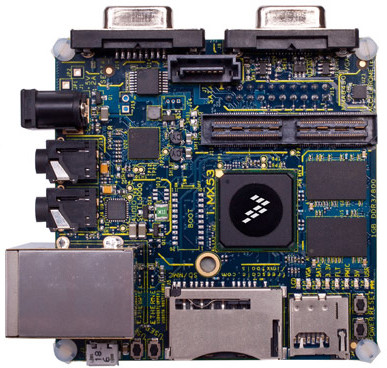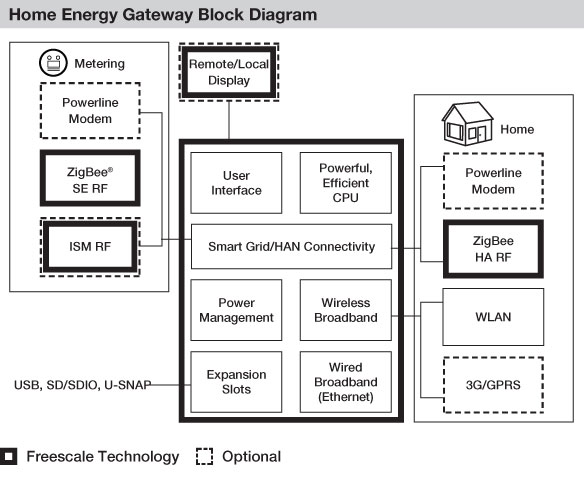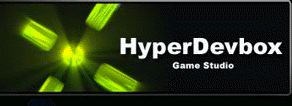Shenzhen Ider Technology (亿典华科技) showcased two Android 2.2 media player prototypes based on a Samsung ARM Cortex A8 Processor (Probably Samsung SOPC100) at CeBit 2011. They feature an Ethernet port, one or several video output ports(HDMI / Component / Composite), several USB Host ports and can output up to 1080p. The low cost version on have HDMI ouput, whereas the other version has HDMI, component and composite. Both devices support wireless mouse and keyboard and come with a magic remote (wii-like) to control Android. This is interesting to note that whereas other set-top boxes doe not use the Android home as there main menu, those media players do. The low cost version would be around 60 to 80 USD for order larger than 1000 pieces and the higher cost version slightly over 80 USD.
Low Cost Freescale i.MX53 (Cortex A8) Development Board
Possibly inspired by Texas Instruments low cost Beagleboard (OMAP 3 – 129 USD) and Pandaboard (OMAP4 – 179 USD) and the large following in the development community, Freescale announced its own “Quick Start Development Board” based on i.MX53 for a cost of 149 USD. i.MX53 QSD Board Hardware Description Listed Hardware Features of the i.MX53 Quick Start Development Board: Processor i.MX53 1 GHz ARM Cortex-A8 Processor Power management IC 1 GB DDR3 memory Display LVDS connector VGA connector Parallel LCD add-on card (via expansion connector) HDMI add-on card (via expansion connector) Audio SPDIF output via HDMI add-on card Freescale SGTL5000 audio codec Microphone jack Headphone jack Expansion Connector Enables parallel LCD or HDMI output Camera CSI port signals I2C, SSI, SPI signals Connectivity Full-size SD/MMC card slot microSD card slot 7-pin SATA data connector 10/100 Base-T Ethernet port Two High-Speed USB host ports Micro USB device port Debug JTAG connector […]
Databases for Linux Embedded Systems: Berkeley DB and SQLite
Embedded systems often need to use database to store contact information, EPG data and more. Many Linux systems use MySQL, however such a large database management system may not always be appropriate for embedded systems. Hence, there are lightweight database management systems implementation that are especially suited to embedded systems by their binary footprint, memory footprint and CPU requirements. If you want to develop in C in Linux and your requirement is to have no (or little) license to pay in your application, you could consider Oracle Berkeley DB or SQLite among others. Oracle Berkeley DB (previously Sleepycat Berkeley DB) is described as follows: Berkeley DB enables the development of custom data management solutions, without the overhead traditionally associated with such custom projects. Berkeley DB provides a collection of well-proven building-block technologies that can be configured to address any application need from the hand-held device to the datacenter, from a […]
Freescale Home Energy Gateway Reference Platform
I’ve previously introduced Atmel / Mentor Embedded smart grid solutions, specifically Atmel In-Home Display hardware with Mentor’s Inflexion User Interface. Today, I’ll present Freescale Home Energy Gateway Reference Platform based on i.MX283 ARM 9 MCU, MC13224V Zigbee IC, 9S08QE32 MCU & MC34726 Regulator and running Windows® Embedded Compact 7. The home energy gateway is the interface between the utility-controlled smart grid and energy-consuming in-house objects. The graphical user interface (GUI) has been design with Silverlight. Functions of the Home Energy Gateway Collect real-time energy consumption from smart meter and power consumption data from various in-house objects Control activation/deactivation of home appliances Generate dashboard to provide feedback about power usage Provide control menus to control appliances Provide a ubiquitous link to the broadband Internet Freescale home energy gateway solutions allow every point of the smart home to be connected and controlled from a central point, enabling power efficiency and energy optimization. […]
Android C/C++ development with Android Native SDK
HyperDevBox is a Japanese based software development company, developing games for Android. They are presenting their new Android game called “Spectral Souls”, the first tactical RPG game for Android. The interesting part is that this Android gamewas not developped with Java, but only using C/C++ programming with Android Native SDK (NDK) (Currently revision 5). Using the NDK means you’ll have to adapt your software to several hardware platform contrary to java development. They now only support Qualcomm and PowerVR GPU for now, and they are working on supporting NVidia Tegra platform and other upcoming GPU. The advantage of native code is a potential performance improvement and code re-use if you have already applications developed in C/C++, the inconvenience is that more work is need to support different hardware. Currently the NDK is only available for ARM platforms (ARMv5TE andARMv7-A), future releases will support x86 instructions. The video below is an […]
Low Cost Android Tablets: Archos Arnova 8 and Arnova 10
Archos – a leader in low cost android tablet with its Archos Gen8 Series (Archos 28/32/48/70/101) – has just released the Arnova Series with the Archos Arnova 8 (149 USD), an 8″ inch Android 2.1 tablet and Archos Arnova A10HT (199 USD), a 10.1″ Android 2.1 tablet. Currently those 2 tablets are based on Rockchip ARM9 RK2818 @ 600 Mhz and use a resistive touchscreen, but in the next few months, they’ll release version with Rockchip RK2918 @ 1GHz (Cortez A8 based), a capacitive touchscreen and Android 2.3 (Gingerbread) for the same price. The firmware of those tablets is apparently not directly supported by Archos, but is developed by a subsidiary in Hong Kong called Arnova (hence the name). Usually the IT (Internet Tablet) series are developed and supported by Archos (better support) and HT (Home Tablet) developed and supported by third parties. Have a look at Charbax’s video of the […]
AES-256 Encryption and File names encryption with 7-Zip (7z)
If you need to safely backup some of your confidential files (email, financial info, marketing info, source code,…), you can use 7-Zip (aka 7z) to compress and encrypt your archive with AES-256 as well as hide the name of the files. This should give you the level of security used by the (in-)famous insurance file (insurance.aes256) released by Wikileaks last year (if it indeed has been encrypted with AES-256). 7-Zip is available for Windows, Linux (multiple architectures) and Mac OS. Since 7-Zip source code is open, it can theoretically be ported to any platform. The first thing I did was to use a Password Generator to get a 256-bit key such as DFF61FFB56B26158718457E5E47F3511080130C855C8E6F689A3A7664EBE2C9A. In this example, I backup “My Documents” directory in Windows, but the same command line (just different paths) could be used in Linux as well:
|
1 |
C:\>"c:\Program Files\7-Zip\7z" a -t7z mydoc_backup_22022011.7z "C:\Documents and Settings\Jean-Luc\My Documents" -xr!*BitTorrent*\ -xr!*Cache*\ -pDFF61FFB56B26158718457E5E47F3511080130C855C8E6F689A3A7664EBE2C9A -mhe -v4480m -mx9 |
Here’s the description of the parameters in the command line: a […]
Freescale Wireless Charging Systems
Freescale showcased two wireless charging systems at Mobile World Congress 2011 in Barcelena. The first product – Energizer’ InductiveCharger – is based on Freescale MC56F8006VLC and follows the Qi 1.0 Wireless Charging Standard. You simply need to use a specific casing (with a wireless power receiver) for your mobile device that integrates the necessary hardware to “communicate” with the power pad. The second product – PowerMat – is based on Freescale MC9S08Q2 andMC9S08K4 to provide intelligent control in the charging mat and phone receiver. It does not follow the Qi standard but works basically the same way. Both systems are available on the market and can be purchased on Amazon and other retailers. You’ll normally need to buy two pieces, the mat and the casing for your phone (for around 75 to 100 USD). Powermat also have one position mat together with the receiver for 37 USD. Watch the video […]










